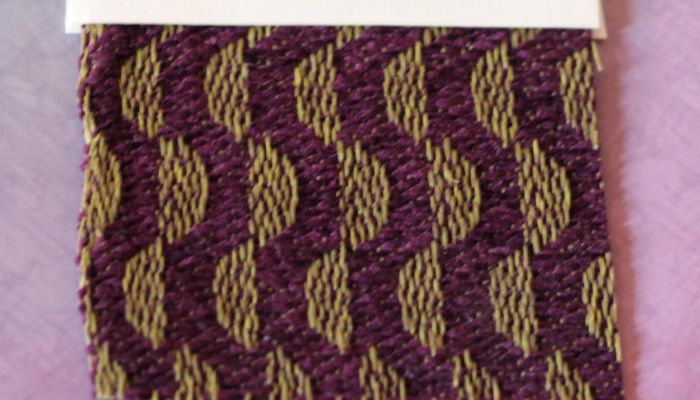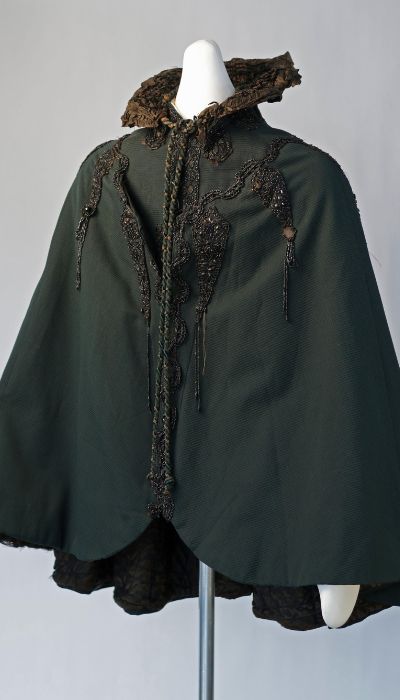Originating from the French word for caterpillar, chenille’s distinctive texture mimics the fuzzy appearance of a caterpillar. This texture is achieved through a special manufacturing process where short lengths of yarn are placed between two core yarns and then twisted together, creating the fabric’s characteristic pile.
| Fiber Source | Cotton, silk, wool, rayon, and synthetic blends |
| Weaving Patterns | Unique weaving with short yarns placed between two core yarns |
| Dominant Colors | Available in a wide range of colors |
| Texture Spectrum | Soft, fuzzy, with a plush pile |
| Breathability Index | High in natural fiber varieties, like cotton and silk |
| Strength & Longevity | Durable, especially in upholstery use |
| Maintenance Needs | Requires careful cleaning, often vacuuming or professional care |
| Primary Applications | Upholstery, clothing, blankets, and home decor |
| Ecological Impact | Varies by material; cotton and silk are more eco-friendly |
| Major Exporters | Global production, with no specific dominant region |
| Comparable Fabrics | Similar to velvet in texture but more durable and less smooth |
1. Materials and Production
Chenille can be made from various fibers, including cotton, polyester, rayon, and acrylic. Each material contributes distinct qualities:
- Cotton: Enhances softness and breathability.
- Polyester: Adds durability and resistance to wrinkles.
- Rayon and Acrylic: Provide different textures and properties.
The combination of these materials results in chenille’s signature plush and soft surface, often compared to velvet but with a more textured and less uniform appearance.

Studies highlight that the pile length in chenille yarns significantly impacts their abrasion resistance. Shorter pile lengths, such as 0.7 mm, demonstrate the least mass loss, enhancing the fabric’s durability, particularly for upholstery applications
2. Diverse Applications
Research indicates that chenille yarns’ abrasion resistance improves with increased twist, gauge, and the use of natural fibers. This finding is crucial for chenille’s use in upholstery, where durability is key.
Chenille fabric’s versatility makes it suitable for a wide range of uses:
In Home Decor
Chenille’s plush feel and durability make it a preferred choice for home furnishings. It’s commonly used for sofas and couches, providing both comfort and a luxurious look. As upholstery fabric, it is ideal for chairs, including those in dining rooms, due to its aesthetic appeal and durability. Additionally, chenille adds a cozy touch to curtains and throws.
In Fashion and Accessories
The fabric’s softness and warmth make it suitable for apparel like jackets and scarves. It is also favored for blankets and bedspreads, offering comfort and warmth.
Special Applications
Chenille also finds its use in decorative textiles, such as in chenille embroidery, where it adds a unique texture to designs.
3. Advantages and Practical Considerations
- Durability: Chenille is known for its resilience and longevity.
- Aesthetic Appeal: It adds a touch of luxury to any space or garment.
- Comfort: The fabric’s plush texture is both inviting and comfortable.
While many chenille fabrics are machine washable, they require careful handling to maintain their texture and appearance. Heat sensitivity is a factor to consider, especially for synthetic chenille, as it can affect the fabric’s feel and durability.
Chenille fabric is generally non-toxic, making it a safe choice for most users. Its hypoallergenic nature is suitable for those with sensitivities or allergies.
4. Comparisons and Special Types
Chenille is often likened to velvet due to its soft feel, but it typically offers more durability and a less smooth texture. Cotton chenille, in particular, provides better breathability compared to its synthetic counterparts.
Thermal comfort parameters of denim fabrics with chenille weft yarns reveal that pile material affects fabric permeability and thermal resistance. This is particularly relevant for denim applications, where maintaining the fabric’s look while enhancing comfort is important.
A study on chenille union fabric production emphasizes the importance of loom process optimization. It shows that specific adjustments in loom settings can significantly improve production efficiency and reduce weaving defects
Some variants of chenille are:
- Micro Chenille: Known for its ultra-soft feel.
- Chenille Jacquard: Features intricate patterns, often used in high-end decor.
5. Conclusion
Chenille fabric’s unique texture, durability, and versatility make it a popular choice in various domains, from interior design to fashion. Understanding its properties, maintenance needs, and uses can help in making informed choices for both personal and professional textile selections.

